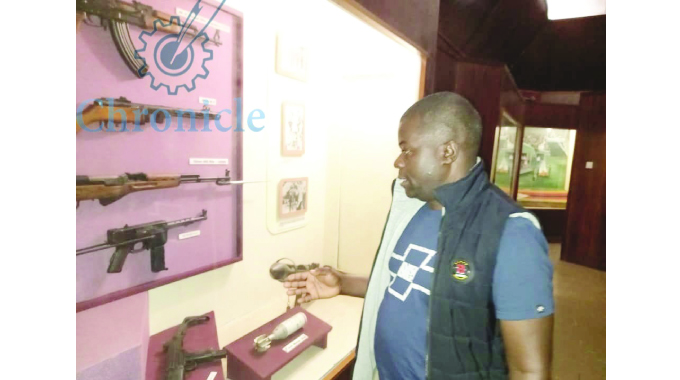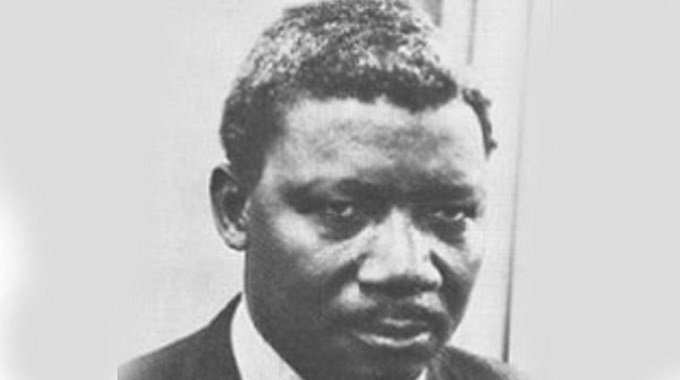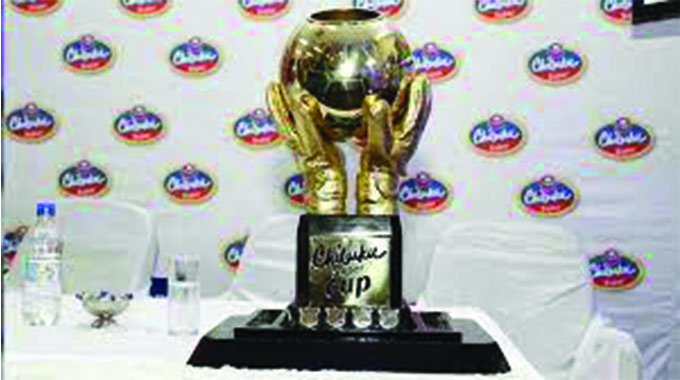ZMM: One of the unique museums

Patrick Chitumba, Feature
THE Zimbabwe Military Museum (ZMM) located in Gweru, is the only museum of its nature in Zimbabwe.
The museum focuses on the research and other museological endeavours in the military field, thereby liaising with the army, air force and police.

The museum opened its doors to the public in 1974 as the Midlands Museum, which was changed to the current name in 1985.
The ZMM in Gweru serves as the country’s National Army and Aviation Museum. Various displays portray the history of the army, air force and police.
As the country commemorates the Heroes and Defence Forces today and tomorrow, a Chronicle news crew went on a tour of the museum to get its significance.
Receiving the eye of the visitor at ZMM are two massive principal tanks placed a few metres from the museum’s main entrance. To the right is the Stuart M-3 MK1 (USA) tank and to the left is the T34 USSR tank.
Visitors can view aero engines, uniforms and equipment associated with Zimbabwe’s military history in the museum’s galleries including the foyer, the military history gallery, armoured vehicle hangar, police gallery, Guinea Fowl School Memorial hut and the artillery hangar.
The entrance to the Military History Gallery displays the two key figures of the Chimurenga (Mbuya Nehanda and Sekuru Kaguvi) and the Ndebele King Lobengula to signify their importance during the liberation struggle.

Cde Herbert Chitepo
The entire gallery is filled with illustrations and short profiles of nationalists such as Cde Josiah Chinamano, Cde Herbert Chitepo, the late father Zimbabwe Cde Joshua Nkomo and Cde Leopold Takawira- who are part of the gallant sons and daughters who sacrificed everything for the freedom of the country.
The Zimbabwe Air Force has a number of aircraft that are no longer flying because they either have been retired or damaged, including an AB-205 “Cheeta” helicopter; a Dakota DC-3 troop carrier, an Alouette III helicopter, a Riems Cessna-337G “Lynx” and a Hawk-60.
Similarly, the Armoured Vehicle Hangar has some very interesting vehicles such as the 4×4 field artillery tractor and the Marmon Herrington Armoured Cars all used to counter nationalists’ efforts to liberate the country.
In an interview after touring the museum, acting regional director of the National Museums and Monuments of Zimbabwe’s Central Region Mr Clapperton Gutu, said the museum specialises in collecting, researching and exhibiting the objects and such paraphernalia that account for the military history of Zimbabwe from the first Chimurenga to date as well as accounting on how other wars affected the military history of Zimbabwe.
“Like any other museum in the world it suits the modern definition of a museum which is regulated by the International Council of Museums, that is, museums are democratising, inclusive and polyphonic spaces for critical dialogue about the past and the futures.
Acknowledging and addressing the conflicts and challenges of the present, they hold artefacts and specimens in trust for society, safeguard diverse memories for future generations and guarantee equal rights and equal access to heritage for all people,” he said.
Mr Gutu said the museum involves active partnership with and for diverse communities to collect, preserve, research, interpret, exhibit, and enhance understandings of the world, aiming to contribute to human dignity and social justice, global equality and planetary well-being.
“Accordingly, the ZMM is the institution of the National Museums and Monuments of Zimbabwe.
Being a property of NMMZ with specialisation in the military, the museum itself has galleries and an extension museum known as the Aviation Museum,” he said.
Mr Gutu said they have armoured vehicles, uniforms, flags, buttons, badges, photographs, documents, maps and other items that make up the past and the present history of the country which is important for the future generation.
“We have swords, medals, weapons, uniforms, photographs, parts of aircraft too.
In 1985 the Board of Trustees of NMMZ recommended a new name for the museum hence the adoption of the appropriate name Zimbabwe Military Museum.
The organisation consists of several departments which combine their efforts in ensuring prosperous management of our national heritage.
These are archaeology/monuments, mining, militaria, education, technical, display/exhibitions and administration departments,” he said.
Mr Gutu said with the kind of collection at the ZMM, the current and future generation can identify the scope of the history of the country.
“What makes this museum tick is that it is one of those few museums with objects that are rare.

Zimbabwe Defence Forces (ZDF)
For example, the planes, the tanks among other paraphernalia used in campaigns and we are hoping to expand the museum to other campaigns held by the Zimbabwe Defence Forces (ZDF) highlighting the significance of the campaigns to the county.
We must be proud of our army,” he said.
Mr Gutu said they have a curriculum that focuses on the national heritage that is the liberation of the country.
“Here there is uniqueness. We are a research institution and we must publish.
So we want one who studied military history and the general history degree,” he said.
“We are going to include audio visuals for the children who come here for tours so that they appreciate the history and be able to take it back to school.”
As the country is commemorating the Heroes and Defence Forces day, ZMM, Mr Gutu said is the right place that celebrates and showcases the story of the liberation struggle.
“Without these national heroes, some buried in unknown graves and at provincial and the national heroes acre, the country would not be commemorating its heroes day and the defence forces.”.
“We do collection, interpretation and store the history of the liberation struggle.
We are also the custodian of the Midlands Provincial Heroes Acre which we maintain.
So we are here to tell the people of what transpired in the country until we saw the nationalists rising against colonial rule to the time we attained independence,” he said.











Comments